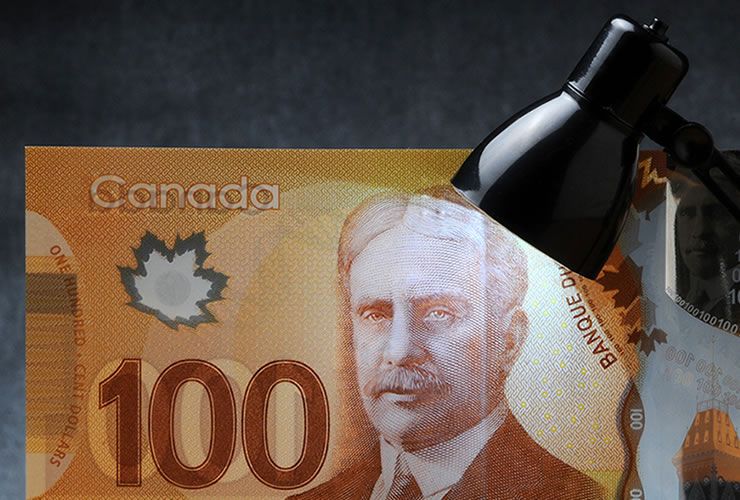Canadian Dollar Pares Gains As August Inflation Disappoints - Retail Sales Mixed
- Written by: James Skinner

August inflation came in below expectations while July retail sales were mixed, with earlier figures hit by downward revisions.
The Canadian Dollar pared gains during noon trading in London after August inflation missed economist estimates, while retail sales data was more mixed, with July's number topping estimates while prior figures were revised down.
Headline consumer price inflation rose by 0.1% month on month, up slightly on July but below the 0.2% consensus forecast of economists, according to the latest Statistics Canada data. This made for an annualised inflation rate of 1.4%, up from the 1.2% seen in July, but below the economist forecast for a headline number of 1.5%.
Headline retail sales rose at a faster than expected pace of 0.4% month on month in July, up from 0.1% in June, and ahead of economist forecasts for a steady 0.1% print.
However, after stripping out car sales, the more important core-retail sales growth number came in at 0.2%, beneath the economist consensus for growth of 0.4%. The previous month's number, for June, was also revised downward from 0.7% to just 0.4%.
"Not too hot, not too cold, retail sales for July came in with lukewarm results--something we expect for the overall monthly GDP print due out next week," says Nick Exarhos, an economist with CIBC Capital Markets.
Friday's data comes closely on the heels of two Bank of Canada interest rate hikes, which have taken the benchmark rate to 1% and driven a sharp upward appreciation of the Canadian Dollar.
"All told, a truly mixed bag of results on the Canadian end, a taste of things to come as growth cools in the second half of the year," adds Exarhos.
The Bank of Canada's recent action on rates came in response to data showing the Canadian economy growing much faster than was previously expected at the end of the second quarter, with GDP expanding at an annualised pace of 4.5% in June.
However, the surprise back-to-back nature of the two 2017 rate increases may now have led market expectations for further action to get ahead of themselves.
“We will be paying close attention to how the economy responds to both higher interest rates and the stronger Canadian dollar,” Timothy Lane, deputy governor at the BoC, told an audience earlier this week.
Lane dedicated much of his speech to the Saskatoon Regional Economic Development Authority to the calamitous effect a strong CAD had on Canada’s non-resource exporters up to the financial crisis and throughout the commodity boom.
“Deputy Governor Tim Lane’s latest speech gave a taste of what we’re likely to hear from Governor Poloz on September 27th, as well as in October’s policy report, says Avery Shenfeld, chief economist at CIBC. “But it had to serve two masters: justifying the recent rate hike, while laying the groundwork for an upcoming pause.”
Shenfeld notes how, in late 2016, the BoC emphasised a fall in the number of total hours worked in Canada in its communications on the labour market - leading markets to expect that rates would not rise in the current year, even if the overall jobless rate continued to fall.
Investors and traders could be making the same mistake again, according to Shenfeld, misinterpreting the BoC’s recent moves.
“Of late, the brilliance of first-half GDP growth not only brought on a well justified tightening, but it’s blinded investors to factors that are likely to materially delay a further round of rate hikes,” Shenfeld concludes.
The Canadian Dollar pared earlier gains during noon trading Friday, with a 0.38% increase on the Dollar fast becoming a 0.10% gain, while a 0.50% gain on the Pound slipped to become a 0.18% increase.
The Pound-to-Canadian-Dollar exchange rate was quoted at 1.6700 shortly after the release while the USD/CAD rate was priced at 1.2302.




